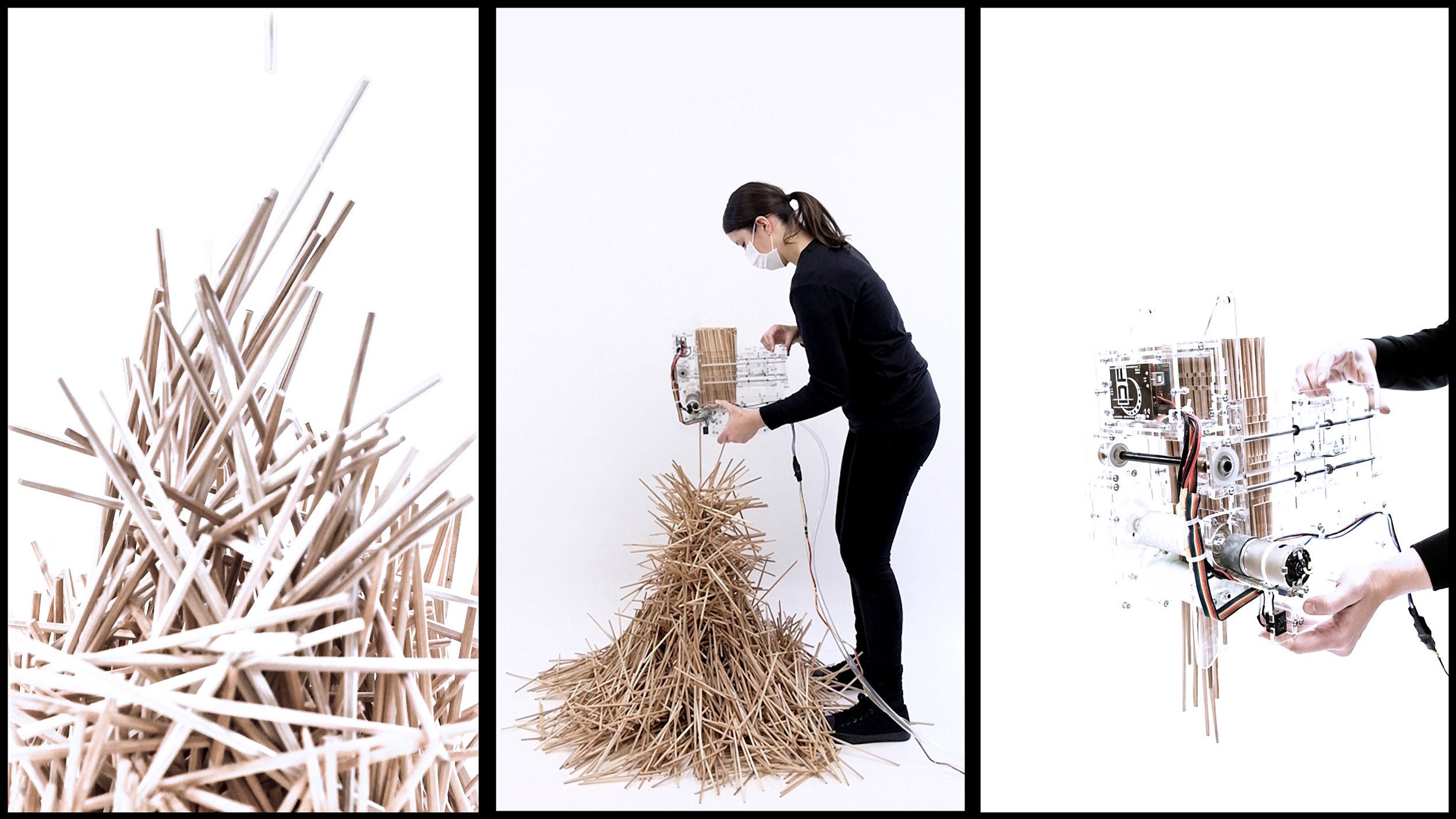
This research project, produced at the University of Tokyo Advanced Design Studies Laboratory, networked human-driven, 3D-printing devices to construct a series of geometrically complex artefacts. The printing material consisted of rejected “waribashi”— chopstiks that contained imperfections and were thus not culturally acceptable for typical use. Through a series of experiments, it was found that by controlling the location of where the sticks were distributed, an emergent aggregation logic could be harnessed to produce constructs at architectural scale.
This entropic process was coupled with a digital feedback system that scanned the material as it amassed. Constructed physical geometries were compared to a digital target model in real-time. From this process, a projection mapping system provided colour-coded instructions to the human fabricator, providing guidance as to where to aggregate the sticks in order to build the targeted shape.









Project at the University of Tokyo, T_ADS, with Shimizu Corporation, Jun Sato Lab, Igarashi Lab — Project Direction: Yusuke Obuchi, So Sugita, Toshikatsu Kiuchi, Kosuke Nagata — Research Leader: Hironori Yoshida — Project Manager: Kevin Clement — Inital Aggregation Concept & Post Pavilion Development: Fawad Osman — Core Research Team: Benjamen Berwick, Ornchuma Saraya, Minjie Xu, Yanli Xiong, Qiaomu Jing, Anders Rod — Pavilion Construction Team: Gilang Arenza Judhinaputra, Pitchawut Virutamawongse, Samuel Aaron Eugene Lalo, Rosina Shatarova, Ratnar Sam, Ying Xu,Deborah Lopez, Haden Habib Cherbel, Ann-Kristin Crusius, Mariko Mori, Jan Vranovsky—Exhibition Design & Project Documentation: Jan Vranovsky, Fawad Osman, Toshihiko Kiuchi, Ryusuke Wada